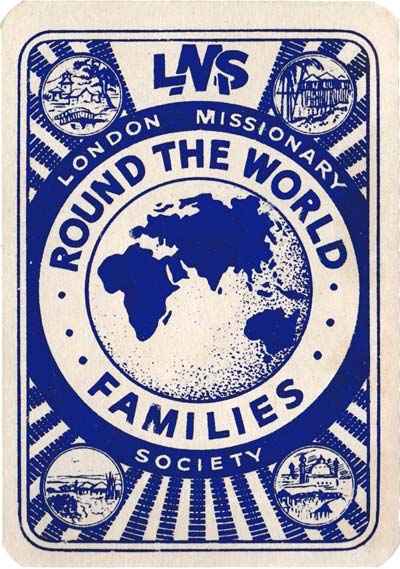Round the World Families
Round the World Families published by the London Missionary Society, c.1945.
Round the World Families published by the London Missionary Society, c.1945. The game has 48 cards with 12 sets of four cards representing places around the world where the Society’s missionaries have carried out missions among the local population. Each of the families of four has a picture of local people and how they were being helped and a picture of one of the missionaries from past or present who had been connected to the place illustrated. The game is played like ‘Happy Families’. See the Rules►
Here is a list of those missionaries and the title of the place depicted: Calcutta, Hannah Mullens (1826–1861) • Erode, R A Hickling (1868–1936) • Gilbert Islands, W E Coward dates unknown • Hankow, Griffith John (1831–1912) • Mbereshi, David Livingstone (1813–1873) • Papua, James Chalmers (1841–1901) • Samoa, John Williams (1796–1839) • Serowe, Khama (1837?–1923) • Shanghai, Dr Lockhart (1811–1896) • Tananarne, David Jones (1796–1841) • Tiger Kloof, Dr Willoughby (1857–1938) • Travancore, Ringeltaub (!770 - ?).
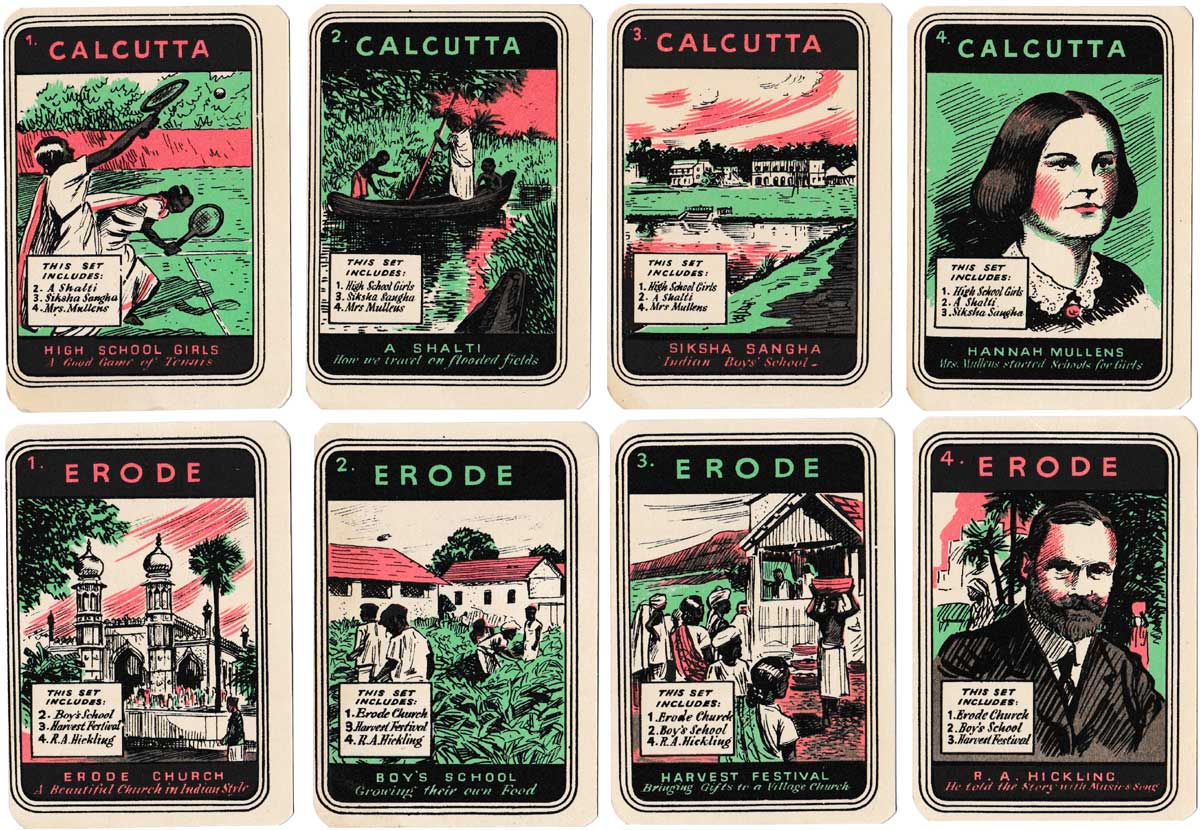
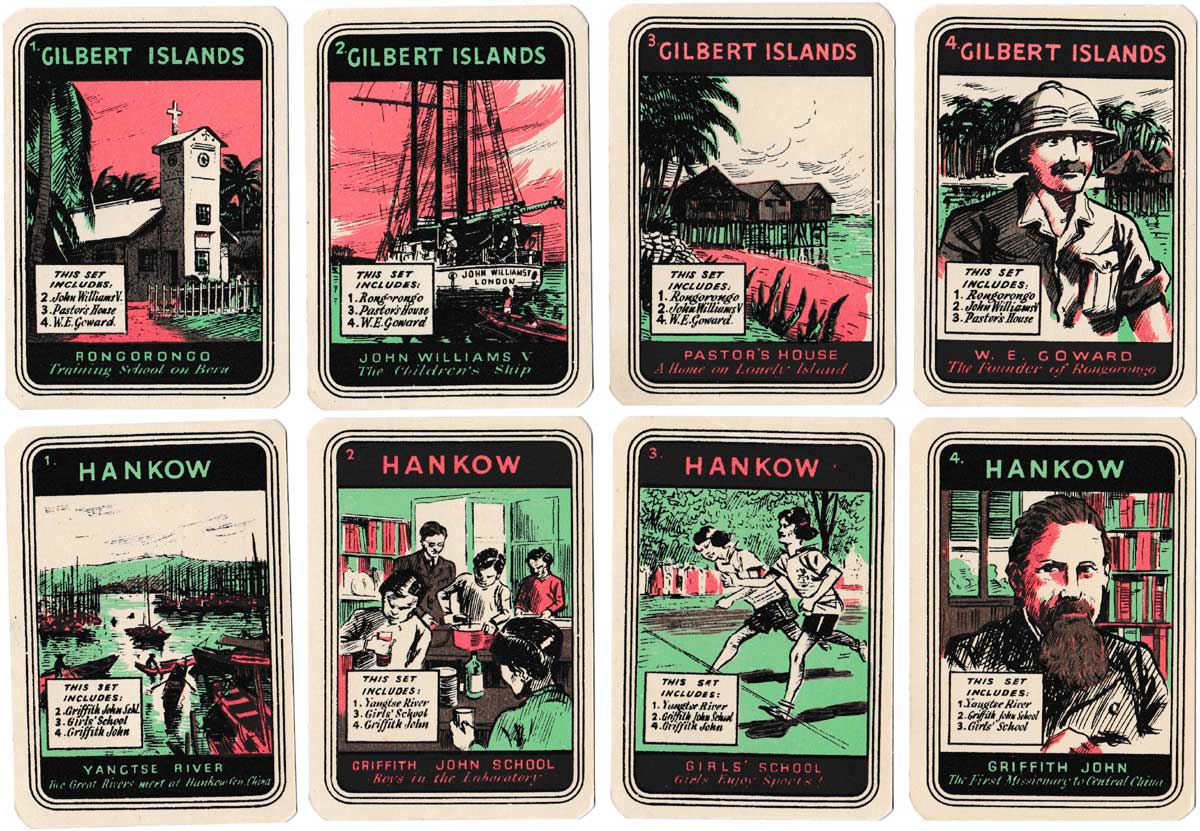
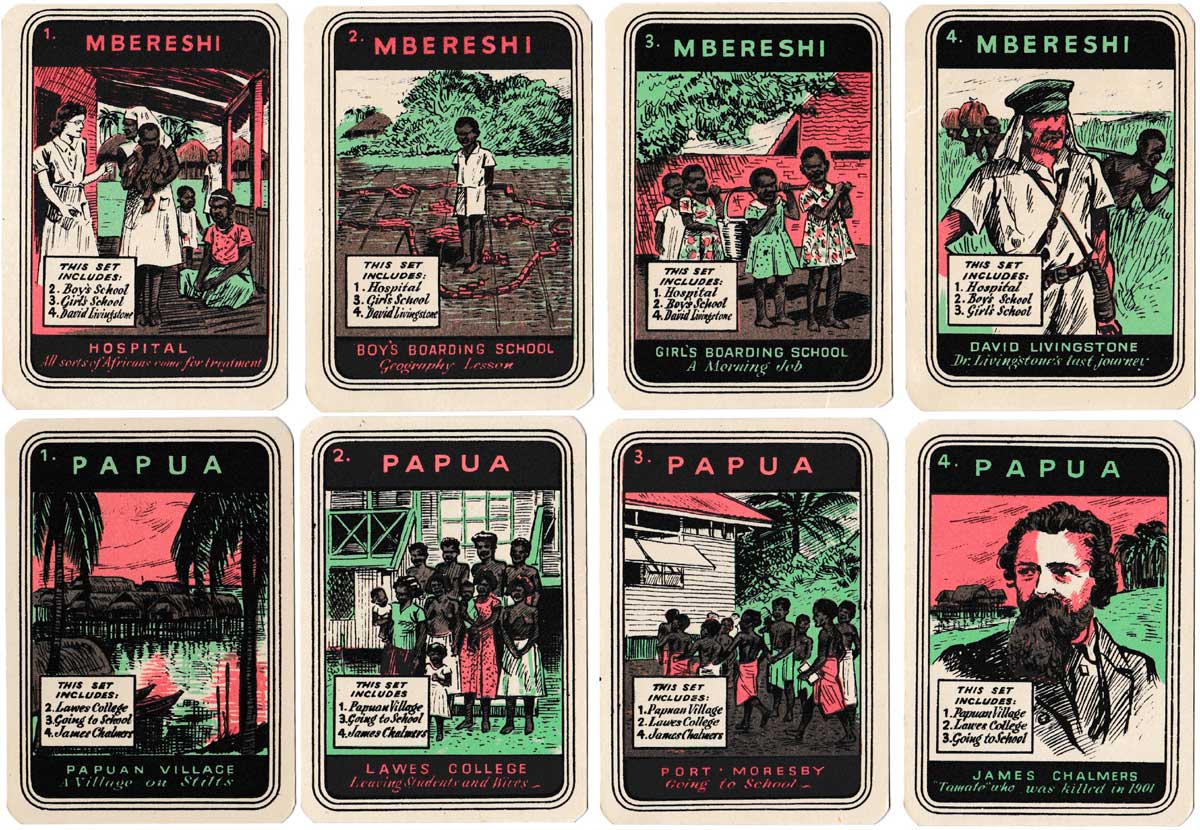
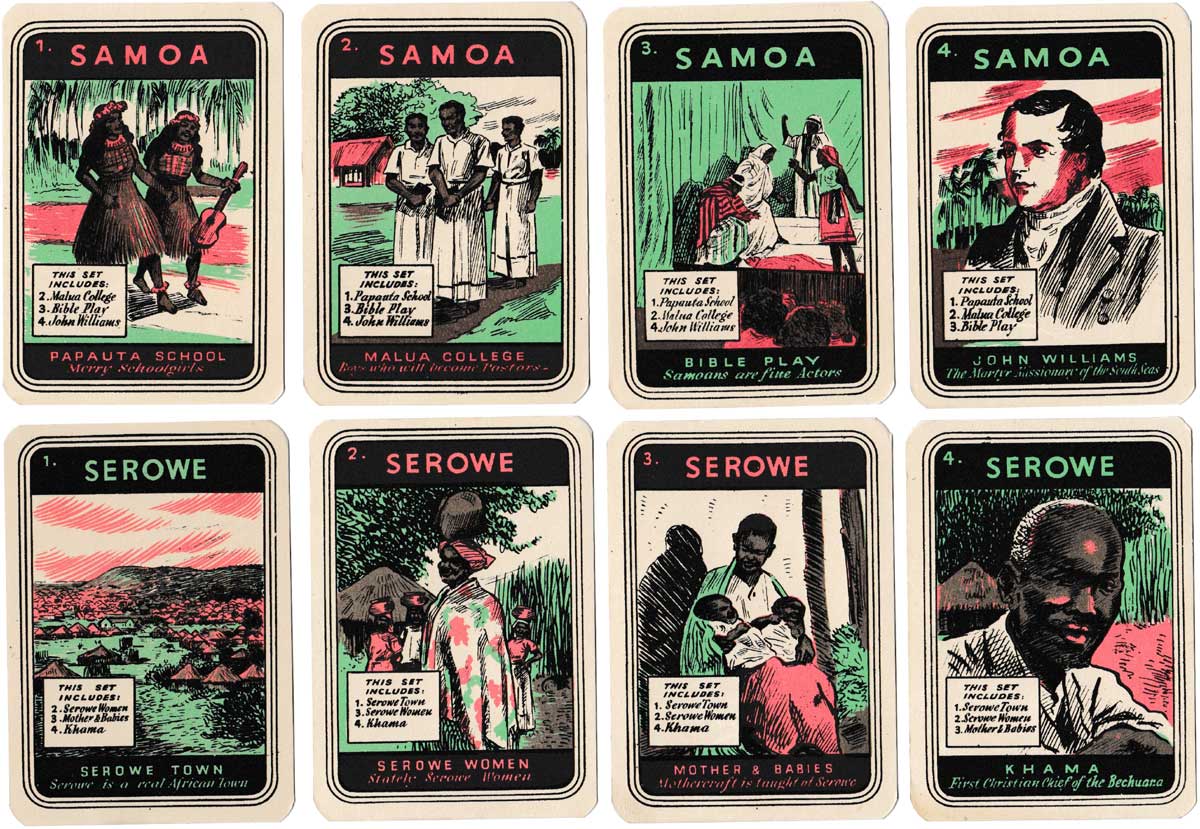
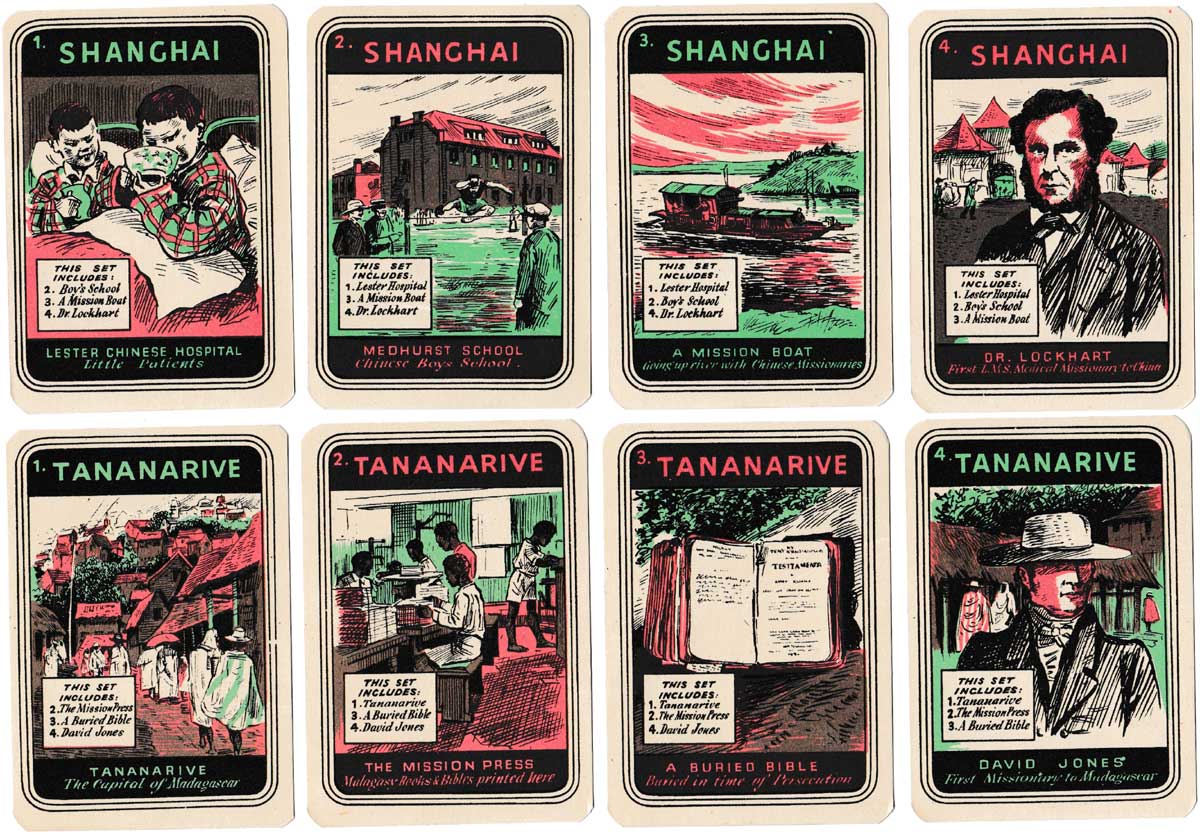
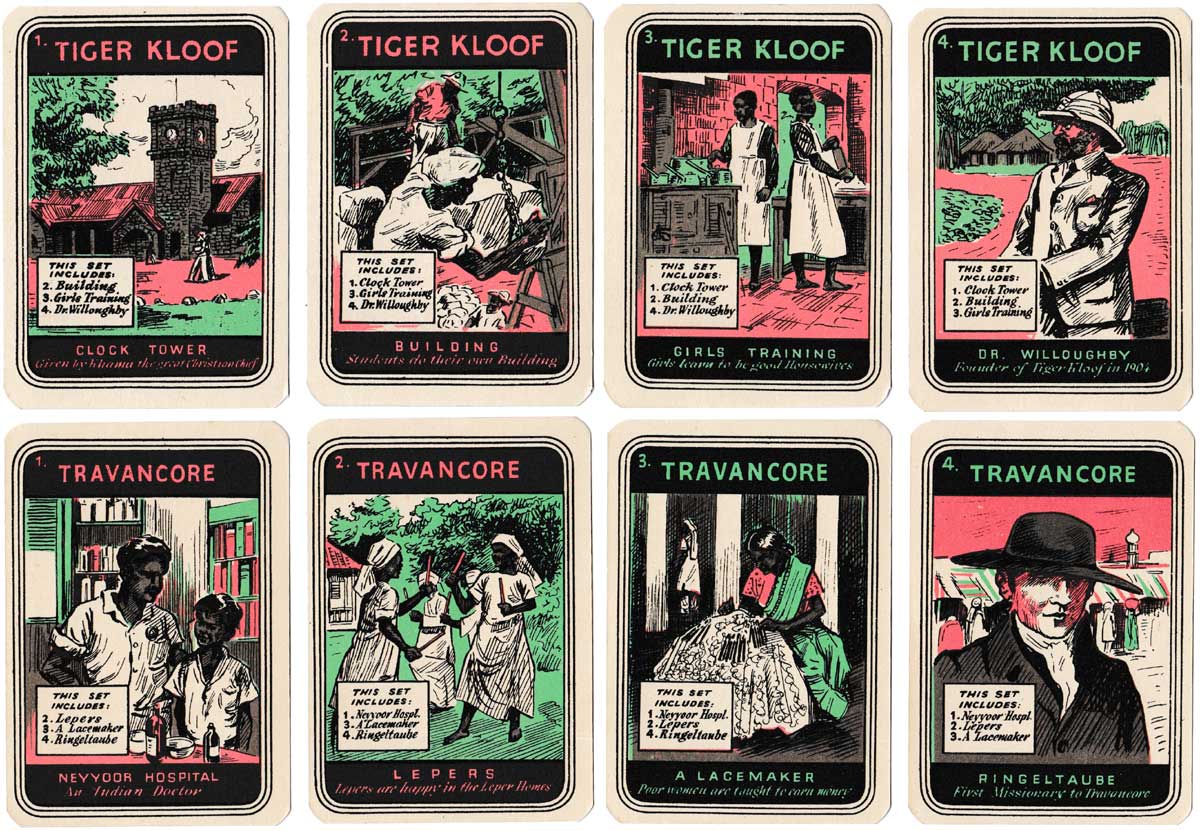
Above: Round the World Families published by the London Missionary Society, c.1945.
The Society was founded in 1795 and became involved around the world prioritising education, especially for girls, school and church building and installation of printing presses to be able to print the bible on site. As an example look at Erode (India), the no 1 card illustrates the famous so called “Brough Church”, built in 1927-1936 by Rev Anthony Watson Brough and named after him. He was a prolific builder who built 94 schools and 20 churches for the mission.

By Rex Pitts (1940-2021)
Member since January 30, 2009
Rex's main interest was in card games, because, he said, they were cheap and easy to get hold of in his early days of collecting. He is well known for his extensive knowledge of Pepys games and his book is on the bookshelves of many.
His other interest was non-standard playing cards. He also had collections of sheet music, music CDs, models of London buses, London Transport timetables and maps and other objects that intrigued him.
Rex had a chequered career at school. He was expelled twice, on one occasion for smoking! Despite this he trained as a radio engineer and worked for the BBC in the World Service.
Later he moved into sales and worked for a firm that made all kinds of packaging, a job he enjoyed until his retirement. He became an expert on boxes and would always investigate those that held his cards. He could always recognize a box made for Pepys, which were the same as those of Alf Cooke’s Universal Playing Card Company, who printed the card games. This interest changed into an ability to make and mend boxes, which he did with great dexterity. He loved this kind of handicraft work.
His dexterity of hand and eye soon led to his making card games of his own design. He spent hours and hours carefully cutting them out and colouring them by hand.
Related Articles

OXO Faces of the Millennium Dinner
Twentieth-century personalities promoting a millennium dinner at the Oxo Tower in London.

Kids Fun Box playing cards
Colourful cards for children with four non-standard suits connected with the natural world.

Tangle Foot Ale
Badger Brewery Tangle Foot strong ale advertising pack.

Scientific Whist
“Scientific Whist” : standard cards with instructions for play on the faces by Chas Goodall & Son, 1...

Agent Provocateur
Branded lingerie collection in a pack of pin-up playing cards.

Nimbus playing cards
Mike Steer’s weather-themed pack with suits in four colours and backs for cardistry.

Agatha Christie and Playing Cards revisited
Agatha Christie uses card-play as a primary focus of a story, and as a way of creating plots and mot...

The Decadent Deck
Studies in the eroticism of the female body by Inge Clayton.

Historic Shakespeare
“Historic Shakespeare” playing cards featuring Shakespearean characters by Chas Goodall & Son.

Copechat Paramount Sorting System
Preserving the past: a specimen deck showcasing edge-notched cards and their ingenious sorting syste...

Heartsette by Herbert Fitch & Co, 1893
A glimpse into a busy print and design office in late Victorian London.

Rap Rummy
Rap Rummy made by Parker Brothers in 1926, only 4 years after the discovery of King Tutankhamen’s to...

Batman® playing cards
Batman playing cards published by InterCol of London 1989.

Can You Believe Your Eyes?
“Can You Believe Your Eyes?” playing cards featuring visual illusions & other oddities.

Pastime Playing Cards for the Blind
The “Pastime” Playing Cards for the Blind manufactured by Goodall & Son Limd., c.1910.

The European Interchanges Quartets
A card game based around motorway intersections from European countries.
Most Popular
Our top articles from the past 28 days


